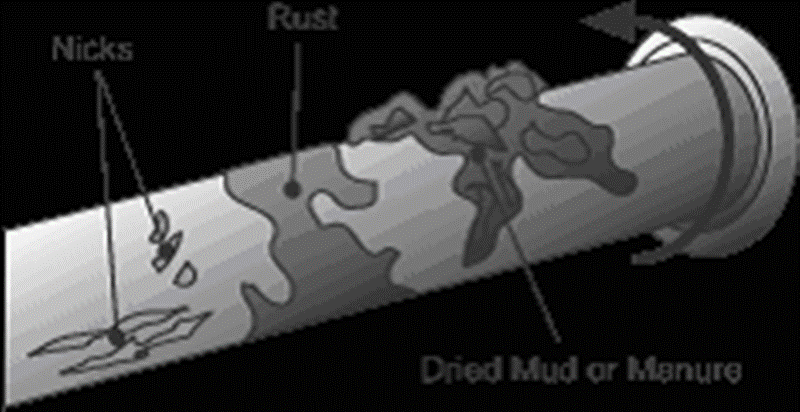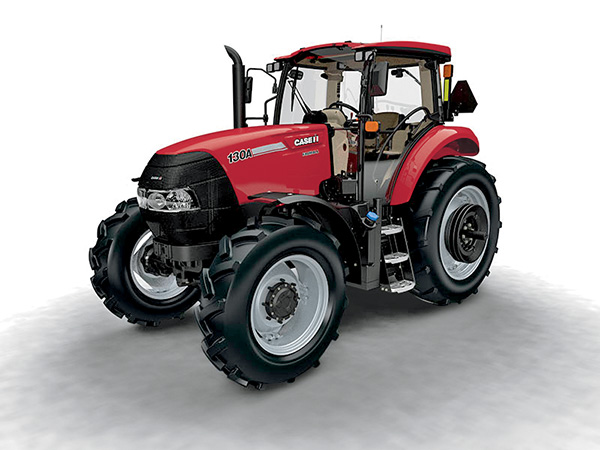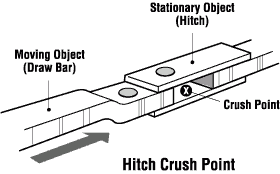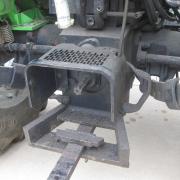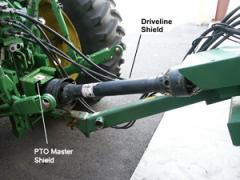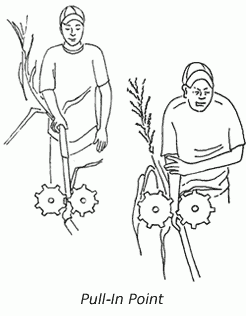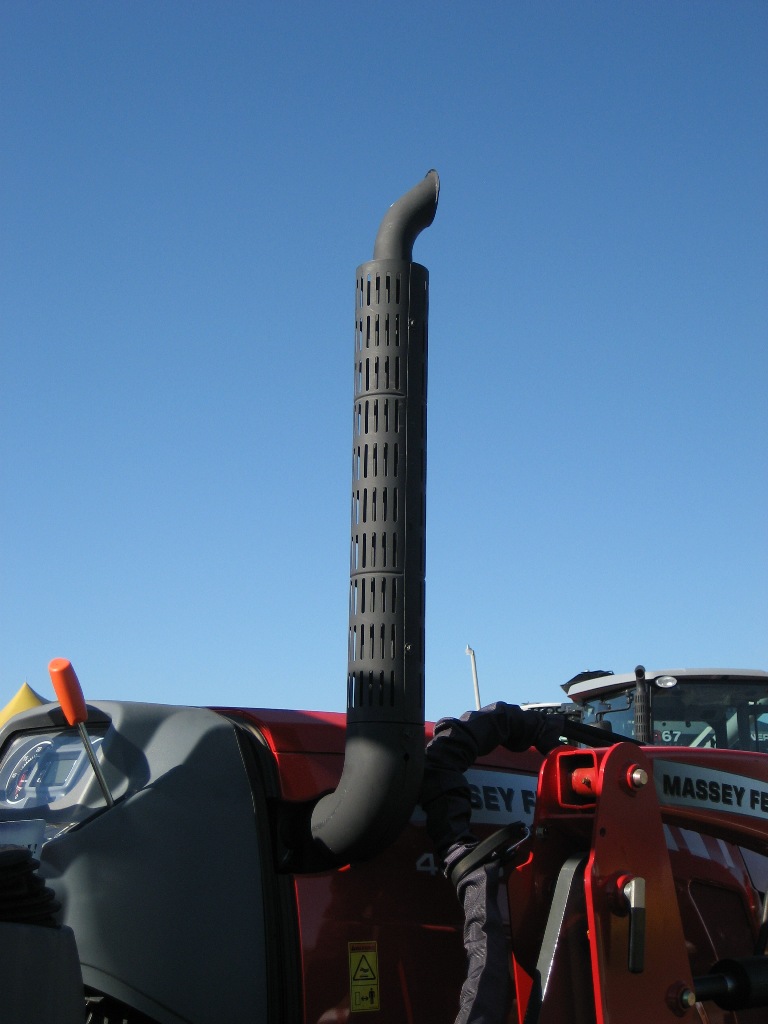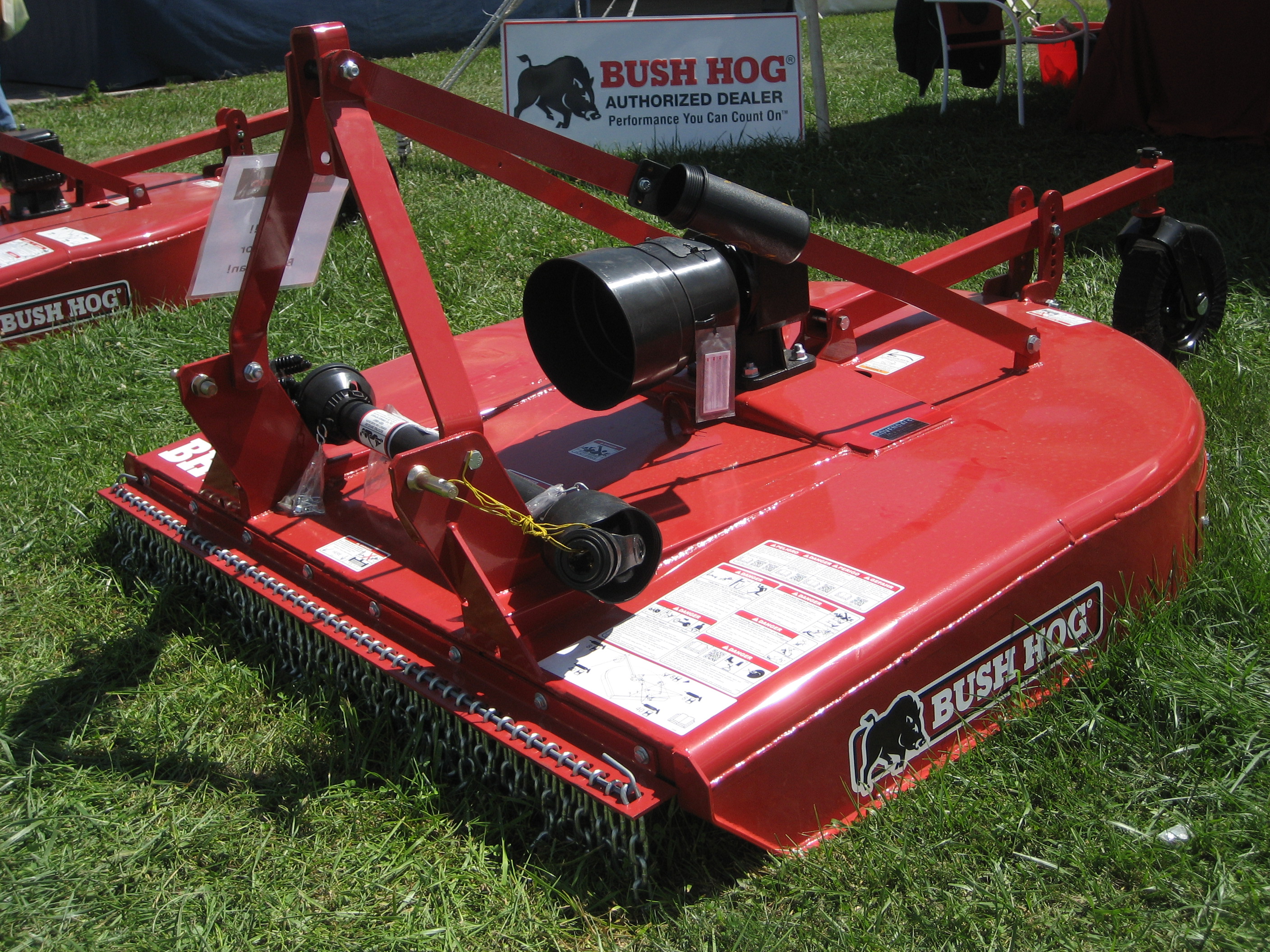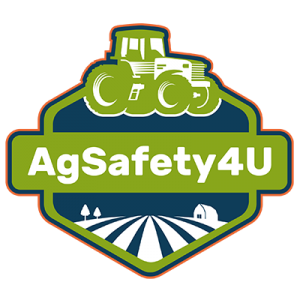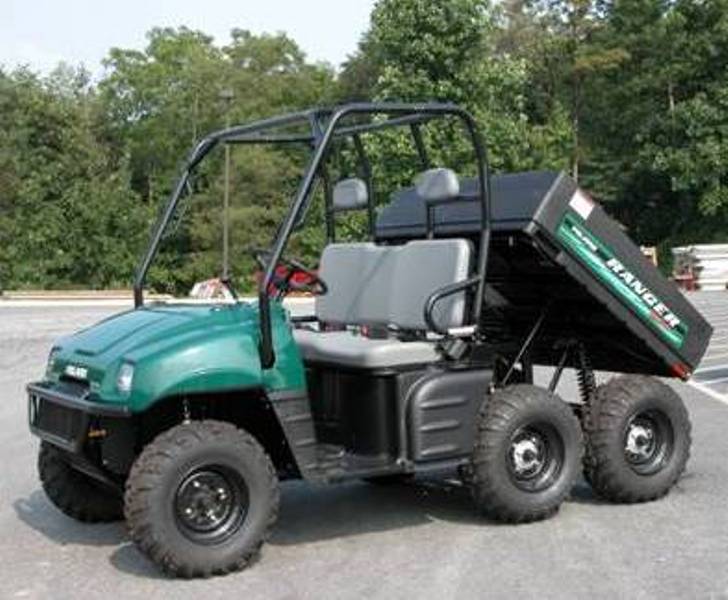
(Polaris Ranger. Source: Pennsylvania State University. Agricultural Safety and Health)
Use the following format to cite this article:
Utility vehicle safety. (2012). Farm and Ranch eXtension in Safety and Health (FReSH) Community of Practice. Retrieved from http://www.extension.org/pages/66330/utility-vehicle-safety.
The use of utility type vehicles (UTVs) on farms and ranches continues to grow because of the versatility, power, and capability these machines offer when completing agricultural tasks. UTVs have four or six wheels and are powered by diesel, gasoline, electricity, or a hydrogen fuel cell. One advantage of a UTV is the cargo bed, which can be used to haul various items such as feed, supplies, and newborn calves, making it ideal for small jobs. Cargo beds can be equipped with hydraulic bed lifts to reduce the physical strain of unloading materials. UTVs have additional features that, compared to all-terrain vehicles (ATVs), increase their value in agricultural settings. For example, UTVs feature easy access to the seat, power steering, an acceleration pedal and brake pedal, seating space to safely transport a passenger, an enclosed cab, a heater, and various seating options (that is, bucket or bench seats).
Remember that utility vehicles are power tools; not toys. Read the owner’s manual and follow the manufacturer’s guidelines for recommended maintenance, usage, and operation. Ensure that all UTVs have appropriate safety decals. Follow the additional safety recommendations outlined below to reduce the risk of injury.
Passengers
A passenger should ride only in his or her own seat and that person should be tall enough to reach the handholds while sitting properly in the passenger seat. Operators and passengers alike should keep their legs and arms inside the UTV when the vehicle is in motion. Passengers and drivers must always fasten their seat belts (when seat belts are available).
Overturn Incidents
To reduce the risk of an overturn incident, decrease speed when traveling on rough terrain—this lowers the risk of the operator or passenger being thrown from the vehicle. The UTV’s center of gravity is raised when hauling loads in the cargo bed. To reduce the risk of overturning, especially when carrying a heavy load, it is important to drive slowly and smoothly when making turns. When driving on an incline, remember that driving up or down the slope is safer than driving across. If making a turn on a sloped area, drive completely up the hill or down the hill before making the turn.
Another way to avoid an overturn incident is to avoid driving near ditches or embankments. The recommendation is that if a ditch is six feet deep, stay at least six feet from its edge.
Operator Responsibility
- Always be aware of your surroundings and look behind you before backing up. Look especially for children.
- As with any type of machinery, never use drugs or alcohol prior to or while operating a UTV.
- Secure loads in the cargo bed to prevent them shifting during transportation.
- Even if your utility vehicle is equipped with a roll bar, remember that the seat belts for you and your passenger must be securely buckled to provide protection in the event of a rollover.
Resources
- Click HERE to be directed to the Youth Agricultural Work Guidelines that provides questions designed to help you determine whether your youth is ready to operate an UTV and have a positive agricultural work experience.
Use the following format to cite this article:
Utility vehicle safety. (2012). Farm and Ranch eXtension in Safety and Health (FReSH) Community of Practice. Retrieved from http://www.extension.org/pages/66330/utility-vehicle-safety.
Sources
Harshman, W., Yoder, A., Hilton, J. & Murphy, D. (2004) ATVs and utility vehicles. HOSTA Task Sheet 6.2. The Pennsylvania State University Agricultural and Biological Engineering Department. Retrieved from http://articles.extension.org/sites/default/files/Version%203.%20January….
Jepsen, S.D. & Henwood, K. (2010) Safe operation of utility type vehicles (UTVs). The Ohio State University Extension. Retrieved from http://ohioline.osu.edu/aex-fact/pdf/0597_1.pdf.

